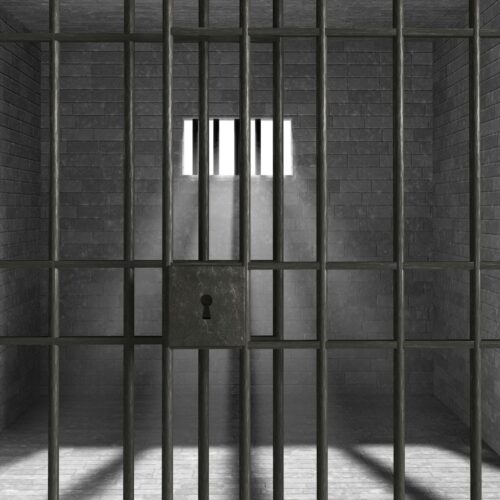
Connecticut Policymakers Reflect on Past Progress With Eye Towards Future Justice Reforms
On January 14, 2014, Central Connecticut State University (CCSU) hosted the Building Bridges Revisited summit, which brought together some 275 government officials, state policymakers, community members, and advocates to discuss ways to improve criminal justice policies in the state.
Panelists discussed Connecticut’s criminal justice system trends, compared them to other jurisdictions regionally and nationally, and identified potential avenues to increase public safety. Reentry service providers described some of the challenges they encounter when connecting individuals to treatment services and employment assistance in the community, while national criminal justice organizations offered examples of what others have done in the U.S. and abroad to improve their criminal justice systems.
Connecticut currently has the second-highest incarceration rate in the Northeast, with 333 people in prison for every 100,000 residents.[1] Probation violations and drug-related crimes are the top two reasons that individuals are incarcerated,[2] and 88 percent of the people in Connecticut’s prisons have substance use issues that require treatment.[3] Both Democrat and Republican legislators examined these challenges at the summit, as Senator Eric Coleman (D-District 2), Senator John Kissel (R–District 7), and Representative Toni Walker (D–District 93) all spoke about the need for continued improvements to Connecticut’s criminal justice system.
Council of State Governments Justice Center (CSG Justice Center) Director Michael Thompson discussed Connecticut’s progress since 2004, when some 19,000 inmates were incarcerated in state prisons—about 2,000 people over capacity.[4] Overcrowded prisons and the prospect of spending millions of dollars to build and operate new facilities prompted Connecticut policymakers to look for ways to contain prison population growth. Using a consensus-based, data-driven “justice reinvestment” approach to reduce corrections spending and reinvest savings in strategies to increase public safety, policymakers developed solutions to decrease parole inefficiencies, reduce probation revocations, and bolster reentry services. In 2004, with bipartisan support, Connecticut became the first state to enact justice reinvestment legislation.
These reforms led to notable declines in the prison population until the 2007 Cheshire tragedy involving two parolees, an incident which prompted elected officials to restrict the parole release process and led to an all-time high of 19,438 inmates in state facilities. In 2008, legislators passed additional data-driven criminal justice reforms, and the state has since experienced improved public safety outcomes. Since 2008, overall crime rates have fallen: violent crimes have decreased by 8 percent and property crimes by 14 percent. During the same period, the state prison population has declined by 16 percent.[5] Today, there are 16,594 people in state prisons.[6]
Since Connecticut’s trailblazing justice reinvestment legislation was first enacted more than a decade ago, 18 other states have worked with the CSG Justice Center to pass similar data-driven legislation. Today, Connecticut officials and community leaders continue to engage criminal justice issues, as they explore new and innovative strategies to improve public safety.
[1] E. Ann Carson, and Daniela Golinelli, Prisoners in 2012—Advanced Counts (Washington D.C.: U.S. Bureau of Justice Statistics, 2013), available at http://www.bjs.gov/content/pub/pdf/p12ac.pdf.
[2] “Connecticut Department of Corrections, January 1, 2014 Statistics, Incarcerated Sentenced Population Top Ten Offenses,” http://www.ct.gov/doc/cwp/view.asp?a=1505&q=537566.
[3] “Connecticut Department of Corrections, Offender Programs and Addiction Services Unit,” http://www.ct.gov/doc/cwp/view.asp?a=1503&q=265564.
[4] Mike Lawlor, 2012 Prison Population Forecast. (Connecticut: Office of Policy and Management Criminal Justice Policy and Planning Division, 2012), available at http://www.ct.gov/opm/lib/opm/cjppd/cjresearch/populationforecast/2012_prison_population_forecast_final.pdf.
[5] “Federal Bureau of Investigation, Crime in the United States, by State, 2012,” http://www.fbi.gov/about-us/cjis/ucr/crime-in-the-u.s/2012/crime-in-the-u.s.-2012/tables/5tabledatadecpdf; “Federal Bureau of Investigation, Crime in the United States, by State, 2008,” http://www2.fbi.gov/ucr/cius2008/data/table_05.html; “Central Connecticut State University, Building Bridges Revisited: Council of State Governments Presentation,” http://www.ccsu.edu/uploaded/websites/IMRP/Building_Bridges_Revisited/CT_Building_Bridges_Revisited_Justice_Center.pdf.
[6] “Connecticut Department of Corrections, Population Counts by Facility As of January 1st, 2008 Statistics,” http://www.ct.gov/doc/cwp/view.asp?a=1505&q=537566.
This project was supported by Grant No. 2010-RR-BX-K071 awarded by the Bureau of Justice Assistance. The Bureau of Justice Assistance is a component of the Department of Justice’s Office of Justice Programs, which also includes the Bureau of Justice Statistics, the National Institute of Justice, the Office of Juvenile Justice and Delinquency Prevention, the Office for Victims of Crime, and the SMART Office. Points of view or opinions in this document are those of the author and do not necessarily represent the official position or policies of the U.S. Department of Justice.
 Vermont Executive Working Group Hears Recommendations on How to Improve Domestic Violence Responses
Read More
Vermont Executive Working Group Hears Recommendations on How to Improve Domestic Violence Responses
Read More
 New Hampshire Governor’s Commission Reviews Justice Reinvestment Initiative Data Analysis and Proposed Policy Recommendations
New Hampshire Governor’s Commission Reviews Justice Reinvestment Initiative Data Analysis and Proposed Policy Recommendations
On April 6, 2023, the New Hampshire Governor’s Advisory Commission on Mental…
Read More Explainer: Minnesota’s Justice Reinvestment Legislation Results in $43.6 Million Annual Increase in Community Supervision System
Read More
Explainer: Minnesota’s Justice Reinvestment Legislation Results in $43.6 Million Annual Increase in Community Supervision System
Read More
 Biden Signs Six-Bill Spending Package Funding Key Criminal Justice Programs
Biden Signs Six-Bill Spending Package Funding Key Criminal Justice Programs
On March 9, 2024, President Joe Biden signed a $460 billion spending…
Read More











